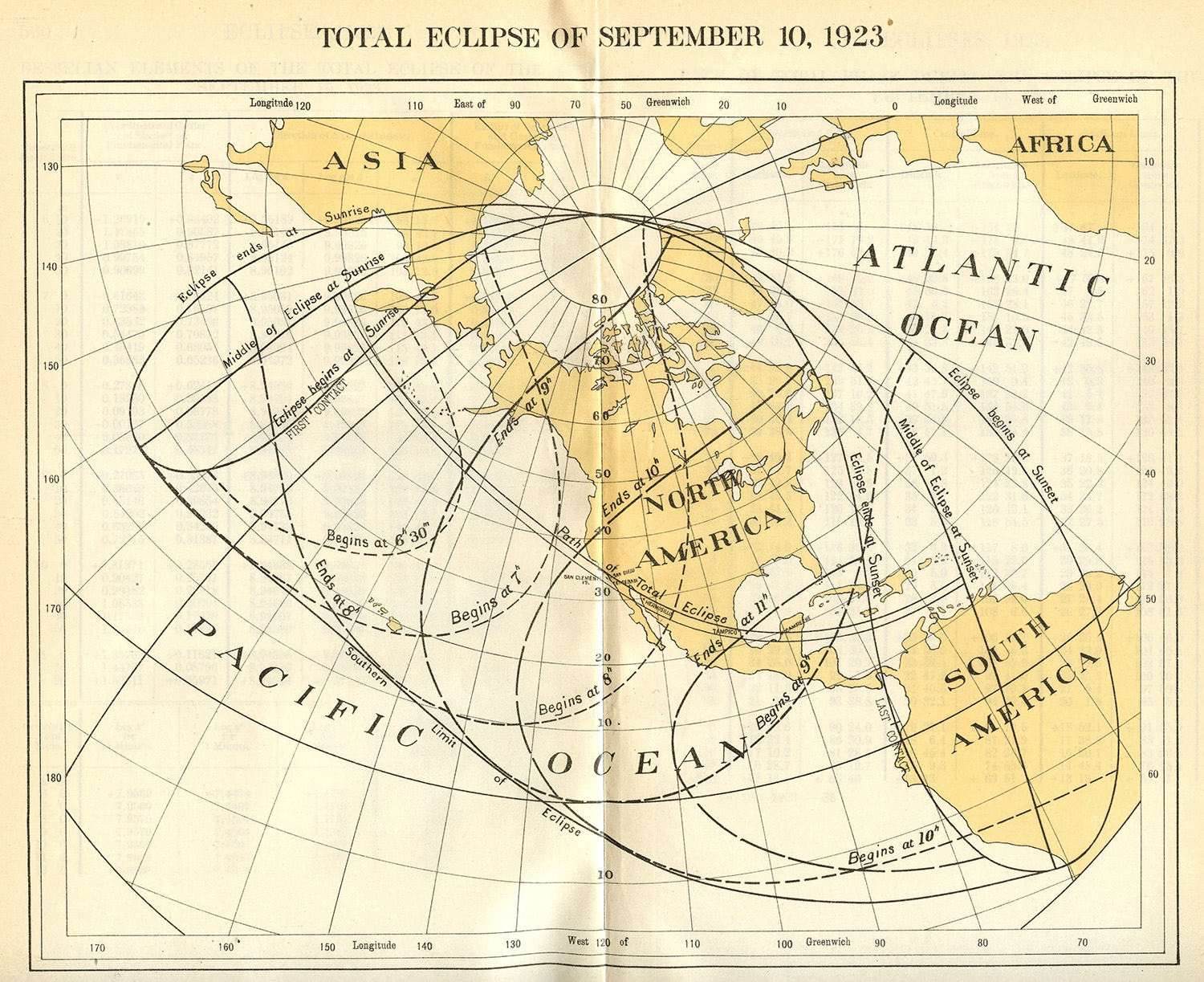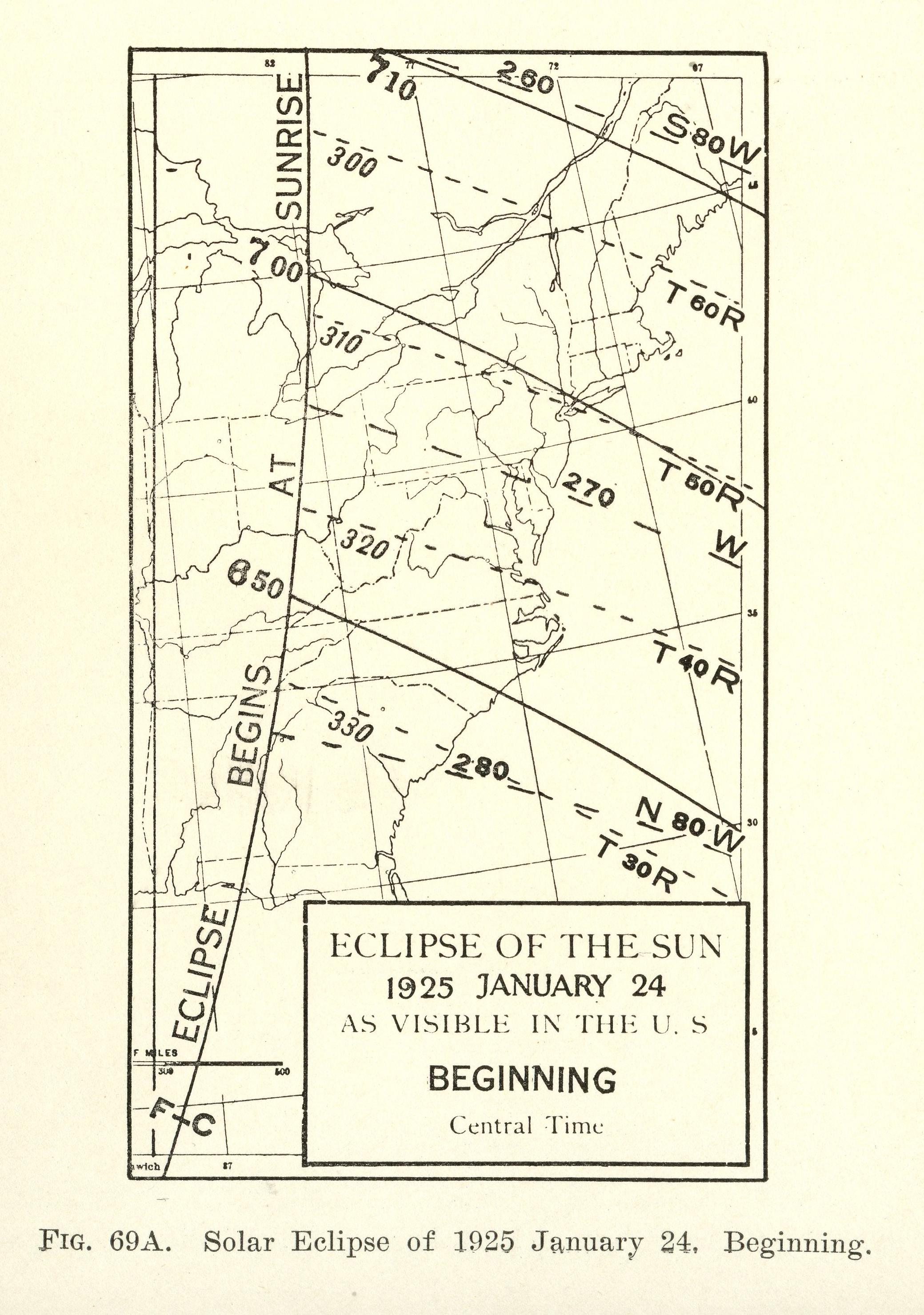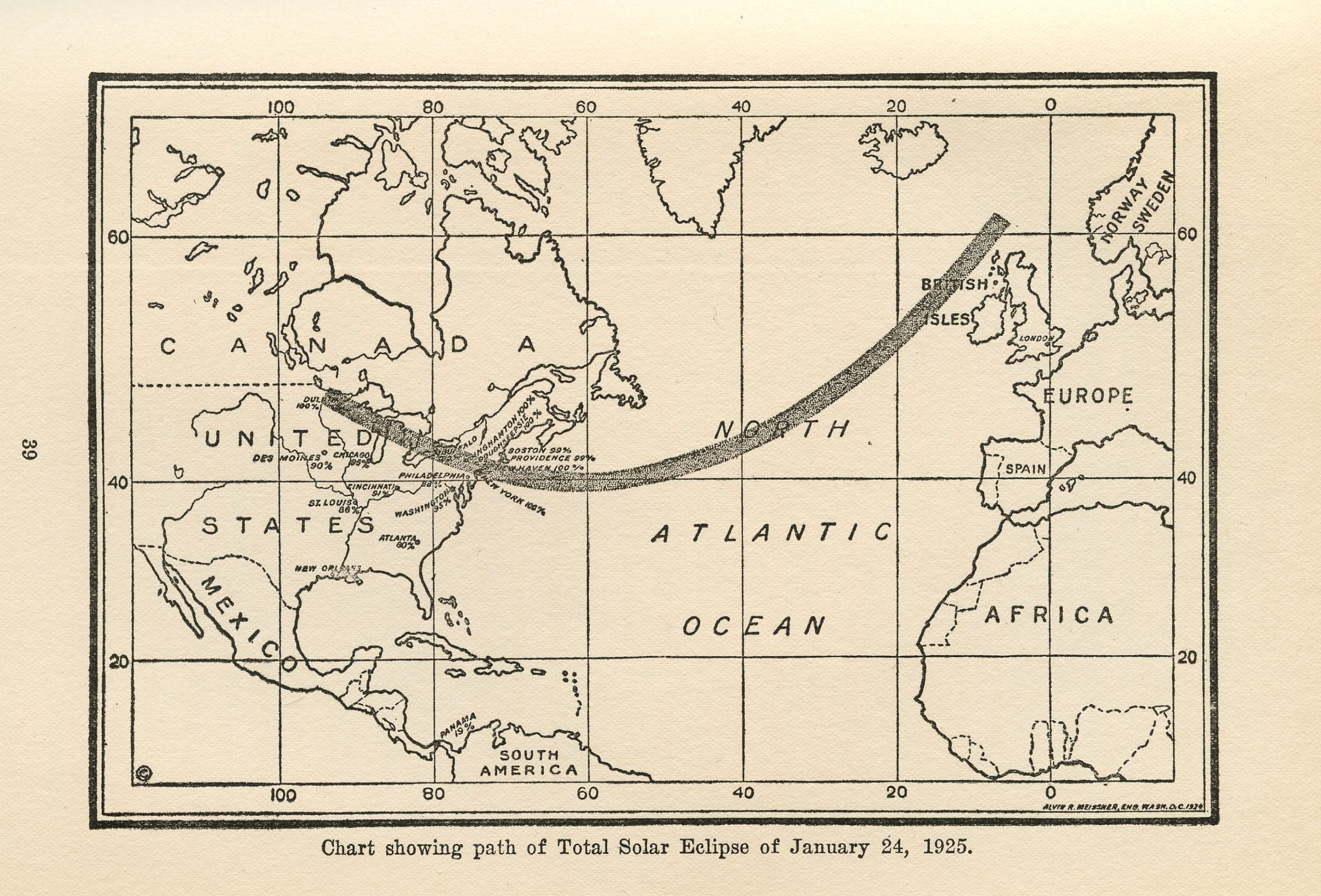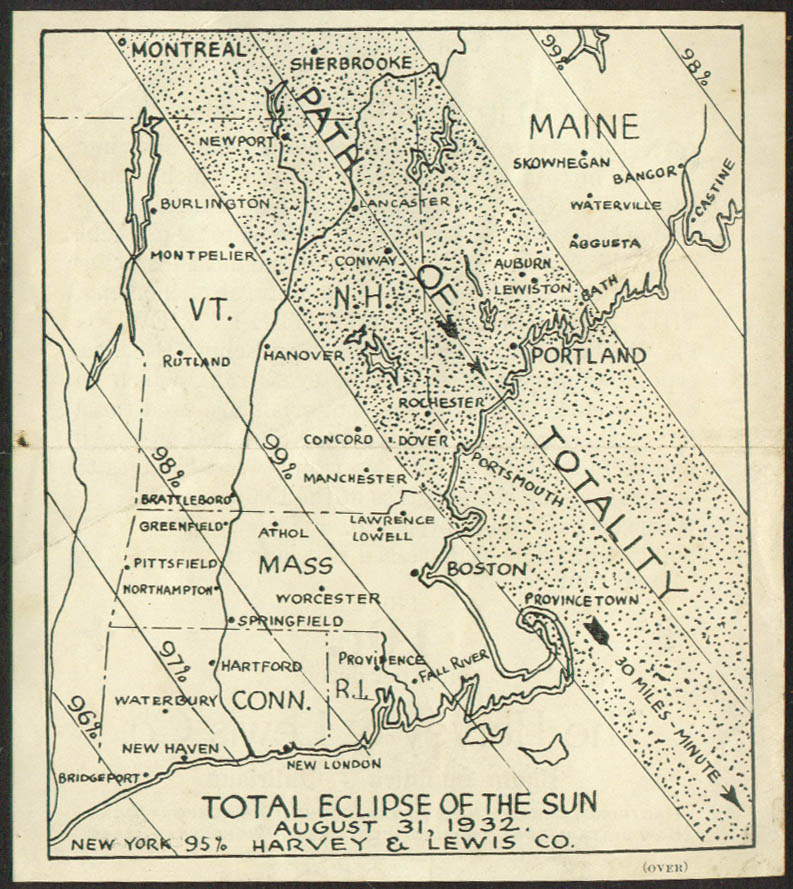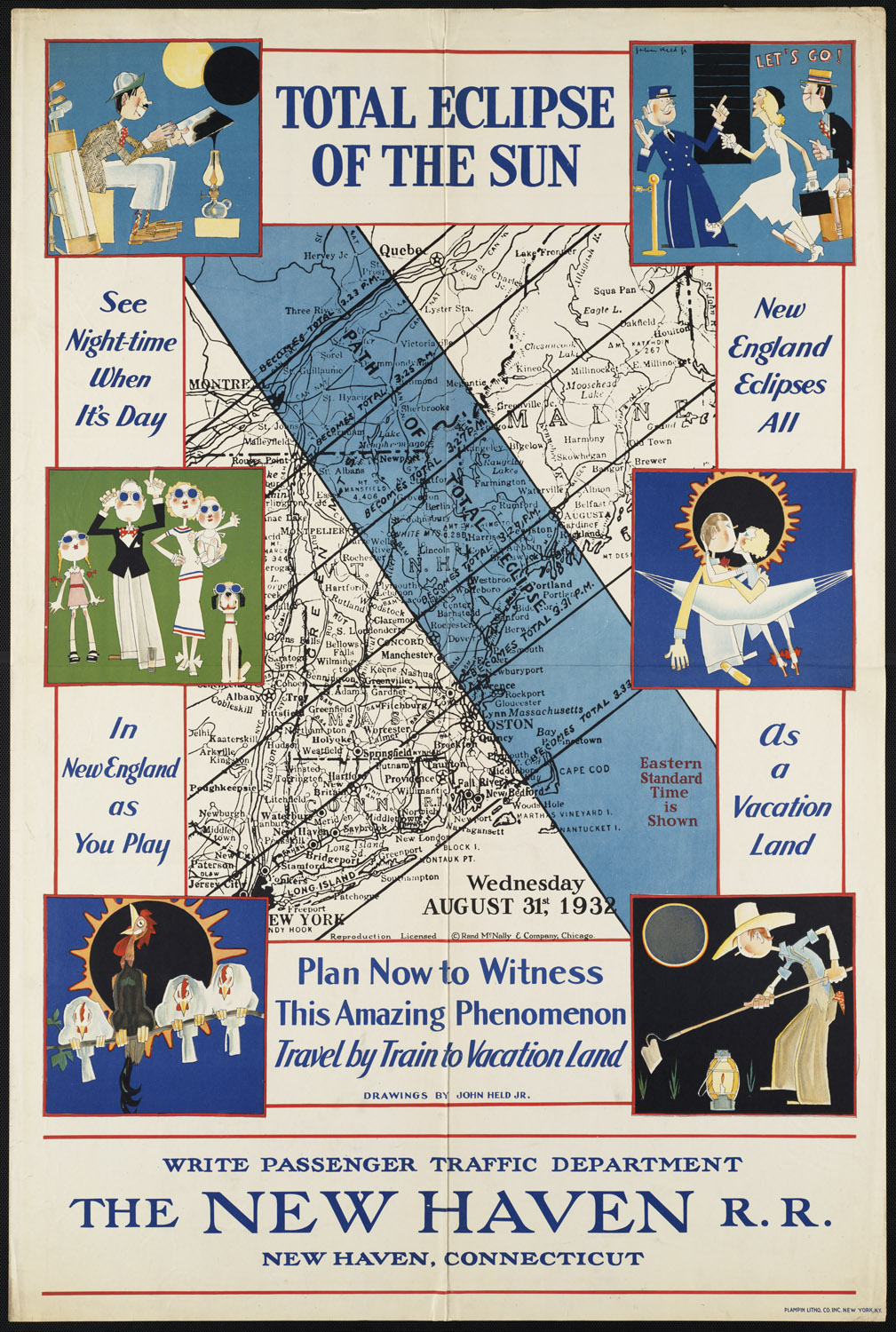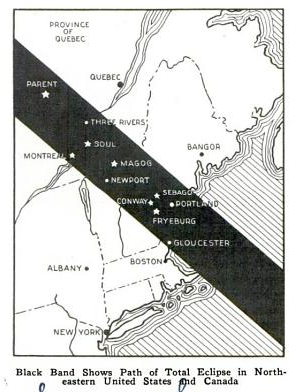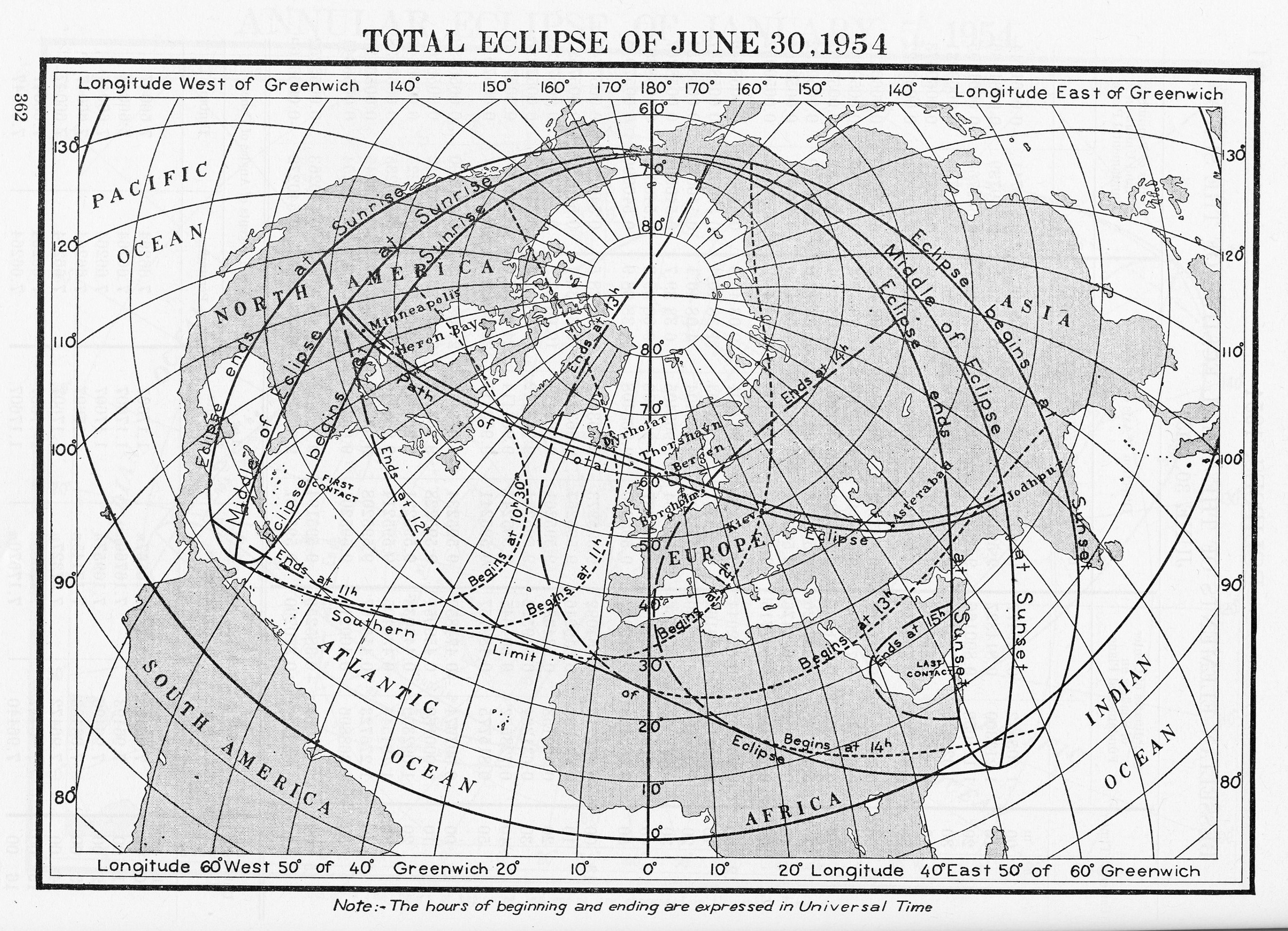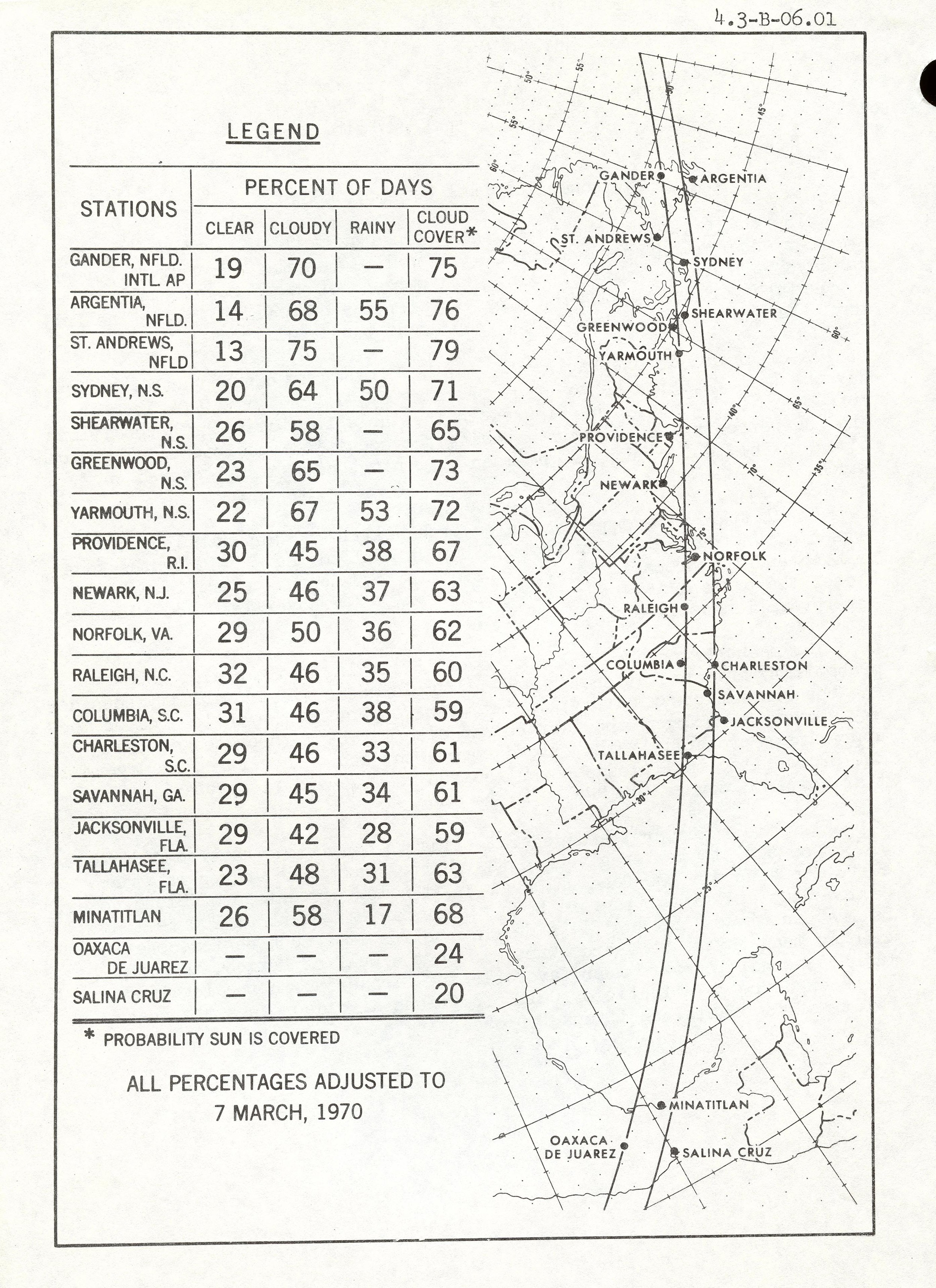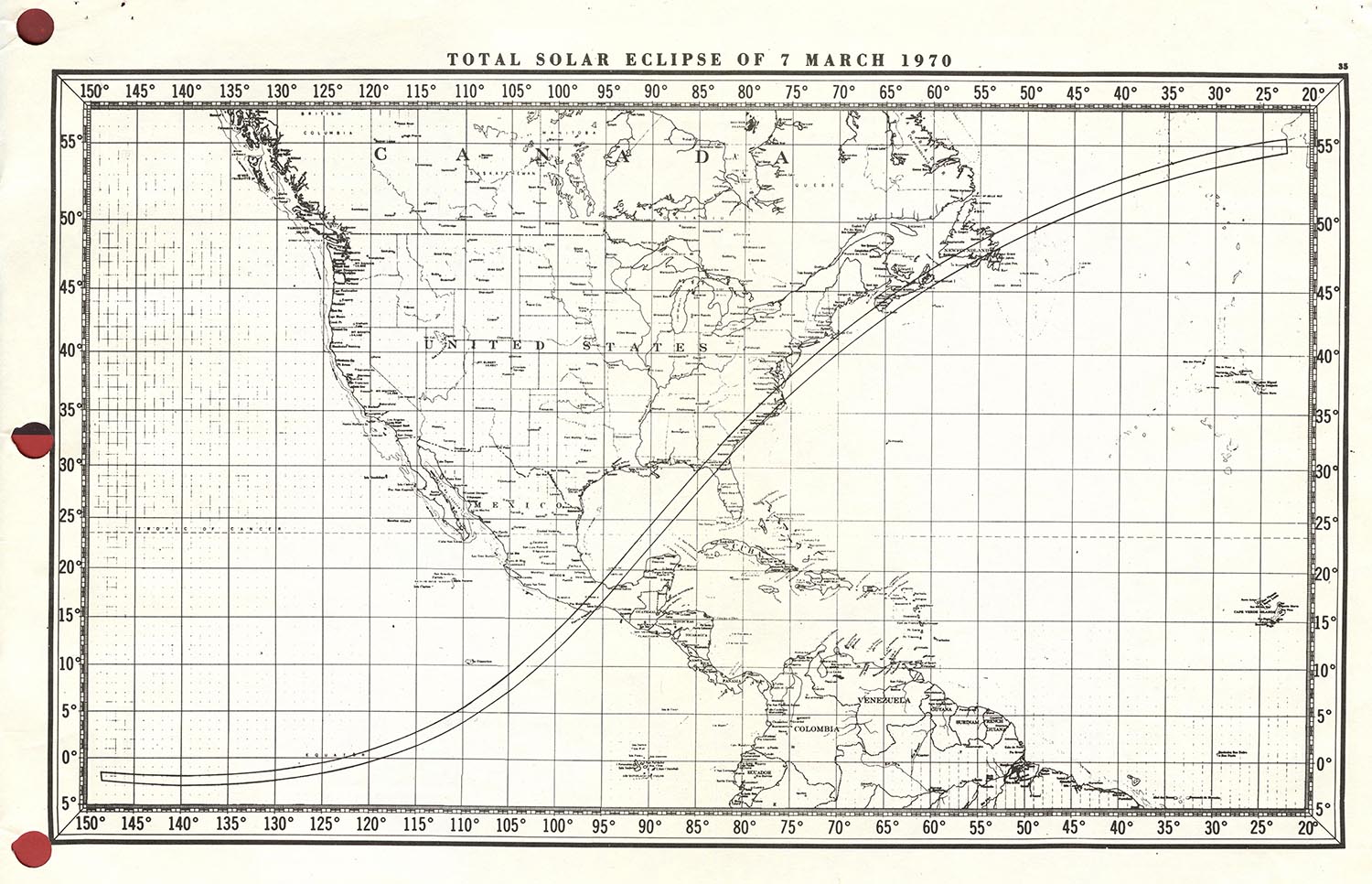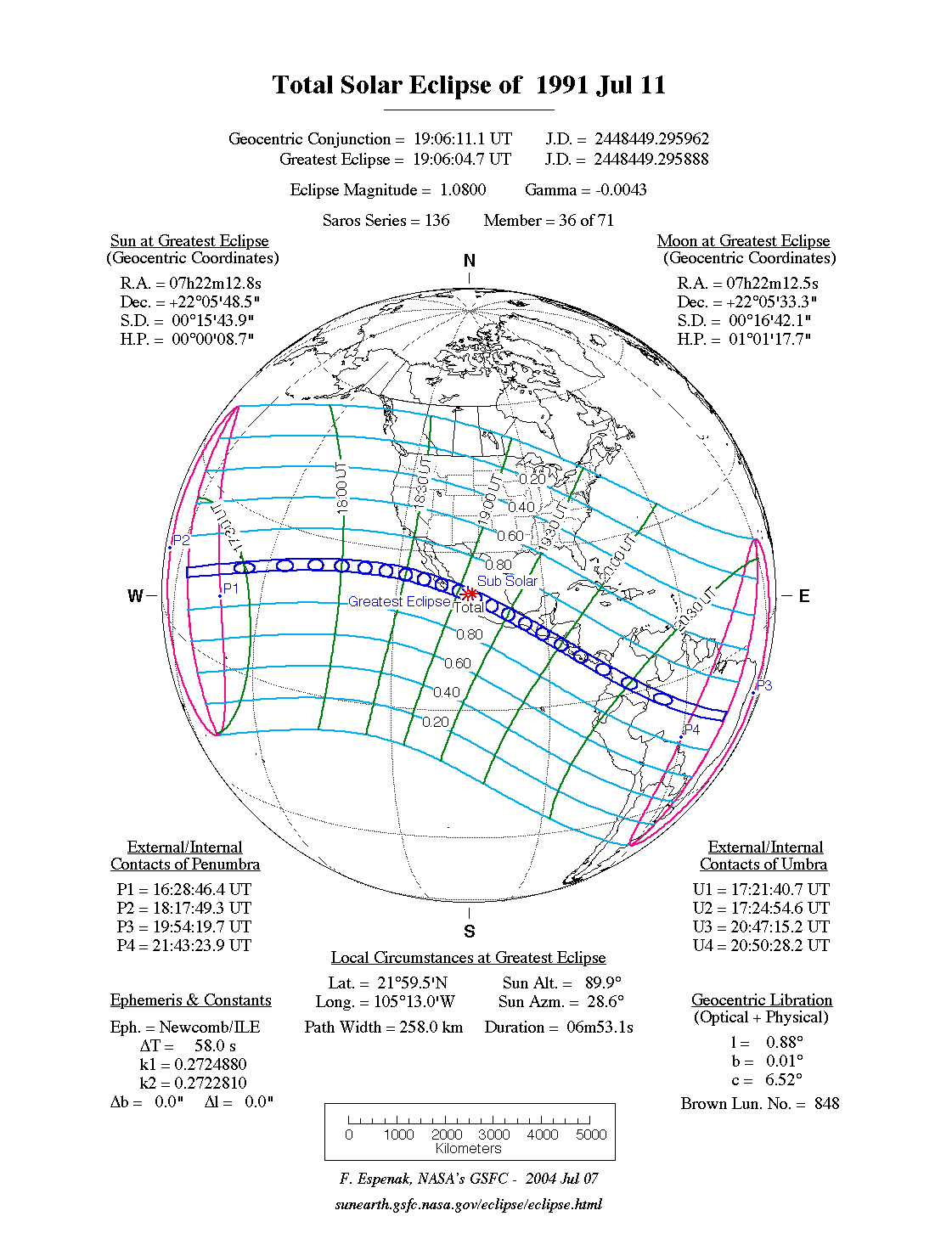The total solar eclipse of June 8, 1918 crossed the United States from Washington State to Florida. This path is roughly similar to the August 21, 2017 total solar eclipse and was the last time totality crossed the nation from the Pacific to the Atlantic.
The US Naval Observatory dispatched an expedition to Baker City, Oregon and successfully observed the eclipse. An artist, Howard Russell Baker, sketched the corona and made a fine painting of the eclipse. Baker City is also within the path of the 2017 eclipse.
The total solar eclipse of September 10, 1923 just grazed the southwestern corner of California, crossing Point Concepcion, the Channel Islands, and San Diego. Bad weather thwarted most observers in this area.
The total solar eclipse of January 24, 1925 was seen by perhaps millions of people in the New York metropolitan area and the northeastern United States. It was a brilliantly clear but very cold day in New York. This eclipse was notable for the number of observatories fortuitously placed in the path as well as the airplanes and dirigible dispatched for a better view.
The total solar eclipse of August 31, 1932 crossed over northeast Canada and the states of Vermont, New Hampshire, Maine, and a small part of Massachusetts. Many people took trains to New England to witness this spectacle.
A total solar eclipse crossed over the northwest United States and Canada on July 9, 1945 as the second World War was winding down. Newspapers of the day splashed eclipse news along with news of bombing raids on Japan.





The total solar eclipse of June 30, 1954 began at sunrise in Nebraska and traversed South Dakota, Iowa, Minnesota, and Wisconsin before crossing Canada on its way to Scandinavia, Europe, and South Asia.
The total solar eclipse of October 2, 1959 began over Massachusetts. The late Professor Donald Menzel of Williams College hired an airplane to view the eclipse with some of his students. One student, Jay Pasachoff, went on to become a prominent solar astrophysicist and credits this experience as a defining moment in launching his career studying the Sun's corona.
The northeast corner of the United States was again visited by the Moon's shadow on July 20, 1963. This eclipse is a plot device in a novel by Stephen King, Gerald's Game.
The total solar eclipse of March 7, 1970 crossed the state of Florida and much of the Atlantic seaboard. Many of today's veteran eclipse chasers began their pursuit with this eclipse as it was accessible to many on the East Coast.
The last total solar eclipse within the contiguous 48 United States was on February 26, 1979. Many of those who travelled to see this eclipse were successful but only because of relocating under partly cloudy skies.
The total solar eclipse of July 11, 1991 was the last to touch any of the 50 United States. Many flew to Hawai'i for this eclipse and sadly most were disappointed by unseasonably cloudy weather on the Kona coast of the Big Island. Many others flew or drove to the tip of Baja California and were rewarded with excellent views of an extremely long duration eclipse, up to 6 minutes and 53 seconds.









